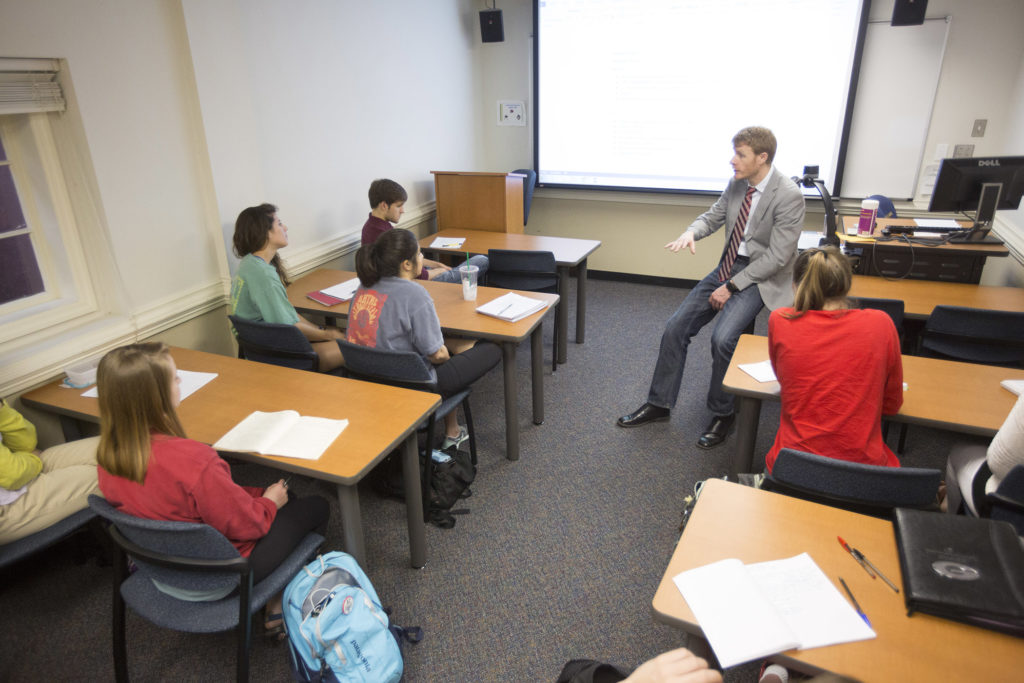In a world where information is just an Internet search away, assistant professor Rodney Averett—one of the new faculty members hired as part of UGA’s small class size initiative—sees his role as a guide who helps students develop their problem-solving skills.
“Smaller class sizes allow students to have more hands-on interaction with the professor, and it gives the professor more leverage to create a problem-based learning environment,” said Averett, who joined the College of Engineering this spring and infuses his instruction with case studies from his biomedical research.
A total of 56 faculty members will be hired to reduce class sizes. By fall 2016, 319 new course sections in 81 majors will be added, and the majority of the new course sections will have fewer than 20 students.
The small class size initiative is part of a broader effort to give UGA students more interaction with faculty members and learning experiences that are tailored to their aspirations. Students at UGA already complete First-Year Odyssey Seminar courses, which are limited to no more than 18 students, and in fall 2016 UGA will become the largest public university in the nation to ensure that each of its students participates in an internship, study abroad, service-learning, research or other form of hands-on learning through the new experiential learning requirement. Also in fall 2016, UGA will launch a campus-wide entrepreneurship certificate program created for students who are interested in launching and growing businesses and nonprofit organizations.
“The University of Georgia is unrivaled among large public universities in the learning opportunities it provides to students,” said Senior Vice President for Academic Affairs and Provost Pamela Whitten. “Here, students have the kinds of personalized and hands-on experiences that are most commonly associated with elite private universities.”
Whitten said that the new course sections added through the small class size initiative satisfy graduation requirements in 50 departments across campus. The course sections were chosen based on enrollment trends, with an eye toward high-demand courses and challenging courses where students would benefit from more personalized attention. New course sections range from “Basics of Chemistry,” a core requirement in the physical sciences, to “Computational Engineering Methods,” which counts toward the graduation requirements of six majors.
“Increasing the number of small class sections in critical instruction areas will improve student learning and success as well as help keep students on track for graduation,” said Rahul Shrivastav, vice president for instruction.
The full impact of the small class size initiative won’t be felt until fall 2016, but the nine students in a campaign politics class taught by Josh Putnam in the School of Public and International Affairs have already given it a unanimous vote of approval.
“In smaller classes you get to know the professor better and more quickly,” said Caroline Kaltz, a junior Honors student pursuing a degree in mass media arts from the Grady College of Journalism and Mass Communication. “You also get to know your classmates better, which creates a more comfortable atmosphere for speaking up in discussions.”
